Jonathan apple tree, photo and description, yield, growing conditions, pruning, pollinators

Both adults and children love to eat apples. Many people prefer to grow this fruit themselves in order to preserve its beneficial qualities as much as possible.
The Jonathan apple tree is very popular due to its aroma and taste.
Even a beginner can cope with its agricultural technology, since no special skills are required during planting and care.
Content:
- Jonathan apple tree, description and photo
- Where to buy, how to choose a quality seedling
- Planting rules, where is it better to plant
- Seedling care
- Growing, frost resistance
- Trimming Features
- Productivity, what determines whether pollinators are needed for the Jonathan apple tree
- How to store Jonathan apples
- Reviews of the Jonathan apple tree
Jonathan apple tree, description and photo
The apple tree was brought from the west, bred by improving the Aesop Spitzenburg variety. This species is also called Oslamovsky apple or winter Khoroshavka. The variety is winter.
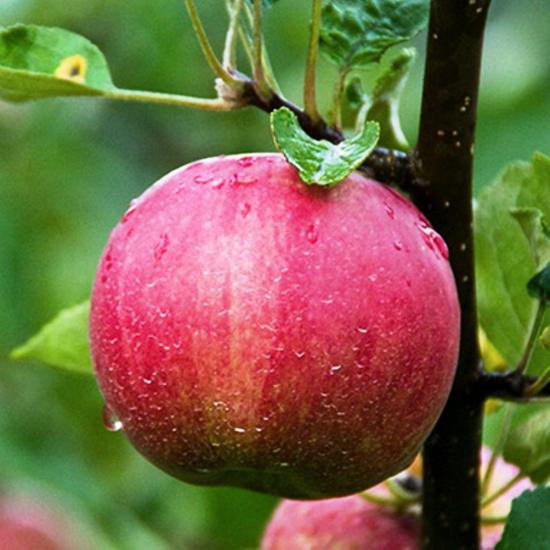
Description of the tree:
- It has a round wide crown and a low trunk.
- The branches are large and constantly stretch upward. If the tree is old and there are a lot of fruits, then the branches may break off and droop from the weight.
- Young seedlings have a pleasant brown color and curling foliage at the edges. The leaves are oval, there is thick down and a silvery coating.
- The variety is considered winter, as the harvest is harvested in mid-autumn.
- Poor frost resistance.
- Fruiting is high with proper care.The first fruits appear in the fourth or fifth year of life.
The species is grown in the middle and southern parts of the Russian Federation and Ukraine.
The tree is attacked by scab and powdery mildew and constantly needs preventive procedures, otherwise it may die.
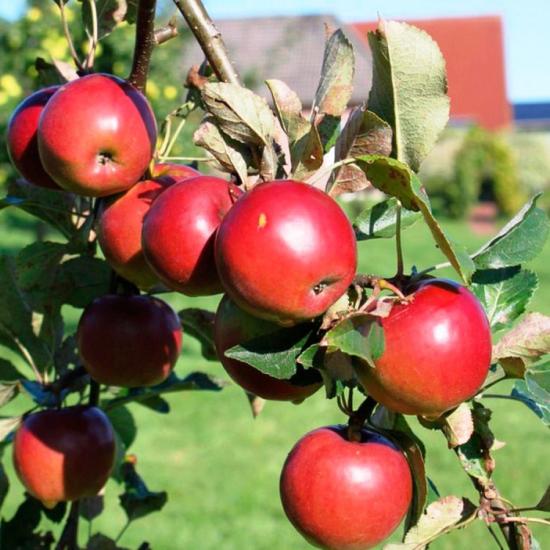
Description of the fruit:
- The apple shape is conical or round.
- The fruits are large, weighing up to one hundred and fifty grams.
- The skin is smooth, in rare cases there is a slight ribbing near the base.
- When ripe, the apple is dark red in color with a crimson blush.
- Inside there is white pulp when unripe, light brown when the fruit is fully ripe.
- The flesh is juicy but firm.
- The taste is sweet with a slight but pleasant sourness.
- Can be stored until April under the right conditions.
A more detailed description of the Jonathan apple tree is in the video:
Where to buy, how to choose a quality seedling
You need to buy young shoots in special garden stores or nurseries. Such trees are not bought on the market, since there is a high probability of purchasing the wrong type of apple tree.
In stores, a sales consultant will answer all your questions and provide quality products. They also buy seedlings through online stores, but the site must have the necessary certificates.
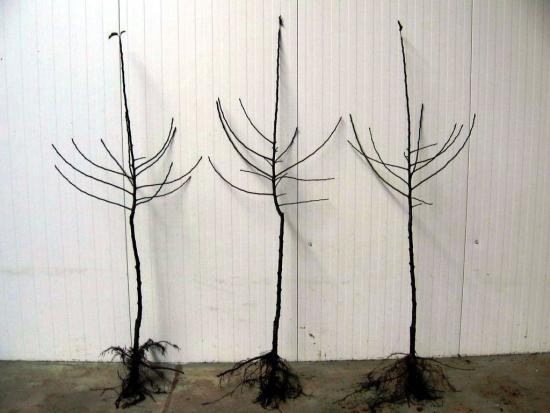
It is important to purchase a seedling young.
The following distinctive features must be present:
- There are no leaves on young shoots.
- Age can be determined by the number of branches. If there is only one branch, then the tree is one year old; if there are several, then it is a couple of years old.
- A healthy root system should be moist and free of rot and other defects.
- The graft should be present at a distance of seven centimeters from the root.
- The height of the seedling is no more than one and a half meters.
If the seedling meets all the specified parameters, it means it is of high quality and will bring a good harvest in a few years.
Planting rules, where is it better to plant
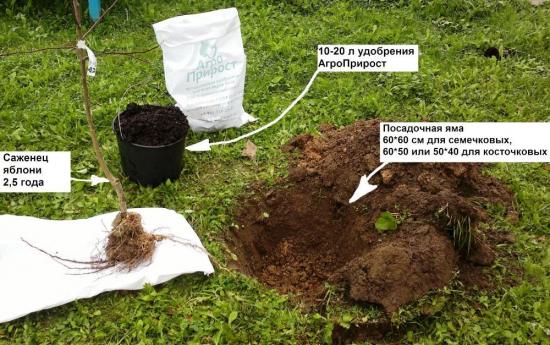
TO planting seedlings needs to be done correctly, observing all the necessary rules:
- First you need to choose the right site. The Jonathan apple tree is a heat-loving plant, so the area should be lit and sunny, it is important to avoid shade.
- Loam and sandstone are suitable as soil. It is important that the land is not depleted; in this case, no mineral supplements or fertilizers will be able to increase productivity.
- Planting can be carried out both in spring and autumn (September-October or April). After planting in the spring, the plant tolerates winter frosts better, since its root system has time to strengthen. If you plant in the fall, then closer to spring the tree will grow more, and there is a chance of seeing fruits earlier.
- After choosing a site, the process of planting the seedling begins. It is necessary to dig a hole one meter wide and 0.7 meters deep. Pour in nutritious organic matter and mix it with regular soil (the mass should occupy one third of the hole). Now you need to hammer in a peg for the tree, it will create a support. The tree is carefully inserted and sprinkled with soil, lightly compacted.
- Fill the seedling with two buckets of water (it will take about 20-24 liters).
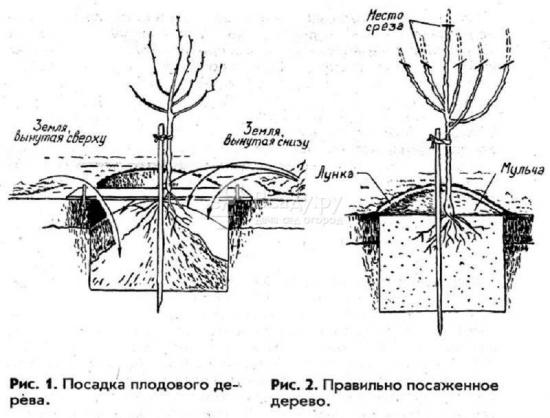
Be sure to mulch near the trunk.
The landing procedure is completed.
Seedling care
Moderate care is required, everything is as usual:
- watering;
- pruning;
- fertilizer;
- disease prevention;
- soil mulching.
Watering should be regular, avoid excessive amounts of moisture, this can lead to rotting of the root system.
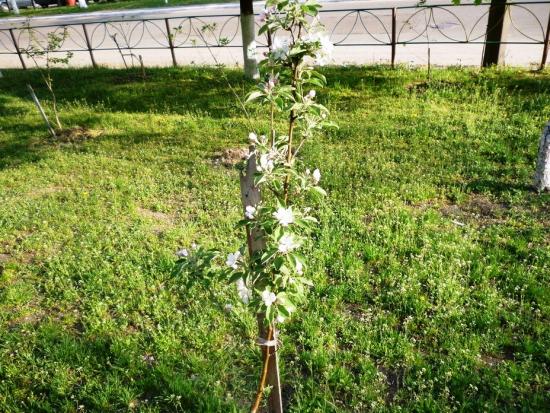
To prevent fungus, use bard liquid; it is important to collect fallen leaves, which contribute to the proliferation of parasites.
At the beginning of November and at the end of March, fertilizing with organic substances is carried out. Humus or manure is suitable to reduce its concentration; the product is diluted with water. When the ovaries begin to form and the fruits appear, nitrogen-based fertilizers are applied. This feeding will speed up the ripening process and increase fruiting.
A properly fertilized tree will more easily withstand frosts in winter and will not be susceptible to disease.
The Jonathan variety is easily infected with powdery mildew, so chemicals are sprayed annually in the spring. Proper trimming of the crown serves as protection.
If you follow these recommendations, the plant will be healthy and the harvest will be abundant.
Growing, frost resistance
During the growing process, it is important to make sure that the climate is suitable for the plant in all respects. It is desirable that it be soft in winter, so that the temperature does not drop below 15 degrees. In cases of severe frost, the apple tree will suffer.
There are cold winters in Russia and Ukraine, so you can insulate the tree in advance. For insulation, spruce branches or other material are used that retains heat and allows the trunk to breathe. In this case, the apple tree will not be harmed, but the harvest will be a little later than in a warm region.
Growing an apple tree next to grapes is not recommended, as this contributes to the spread of the fungus. If the area is small and it is not possible to plant them separately, then during treatment with antifungal agents it is necessary to carry out manipulations throughout the garden simultaneously.
Trimming Features
All fruit trees require regular pruning. The procedure is necessary to remove the growth of young shoots, eliminate crowding and to renew the crown. Excessive branches contribute to the formation of small fruits.
After purchasing a seedling, pruning is carried out a couple of years after planting. They carry out pruning to create a beautiful shape, and sanitary pruning to remove damaged or young branches. The owner can choose the shape, taking into account his own preferences, for example, in the shape of a spindle, a bowl, or in several tiers.
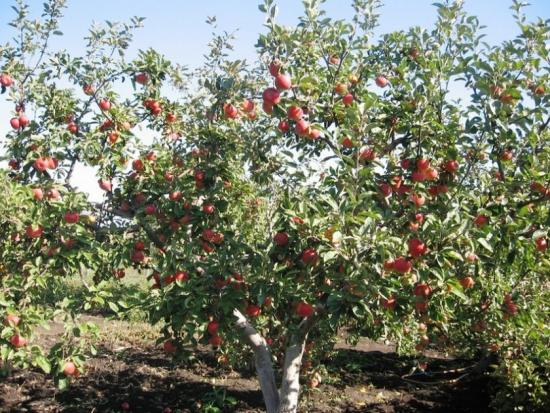
Rejuvenating pruning is performed on old trees.
This manipulation is very important for good yield, so if it is not possible to perform the procedure correctly, it is better to hire a professional.
Let's watch an interesting video about pruning apple trees:
Productivity, what determines whether pollinators are needed for the Jonathan apple tree
The first harvest can be harvested in the fourth or fifth year after planting. If the tree is planted in the shade, due to lack of light, the fruiting period will not come soon.
The yield of a young tree ranges from eighteen to twenty kilograms per season.
The yield of an adult tree ranges from forty to eighty-five kilograms.
If there is no pollination, fruiting will deteriorate. It is important to plant other varieties of apples with Jonathan, for example: seven, melba, Idared, Mackintosh and Welsh. When it is not possible to plant these trees, grafting is carried out.
Gardeners tried another method: they tied flowering branches of a different variety to the top of the head, along with a container filled with water.
How to store Jonathan apples
Apples are harvested from September to October.To preserve fruits until spring, use special trays and create the necessary temperature for storage, +2…+3 degrees.
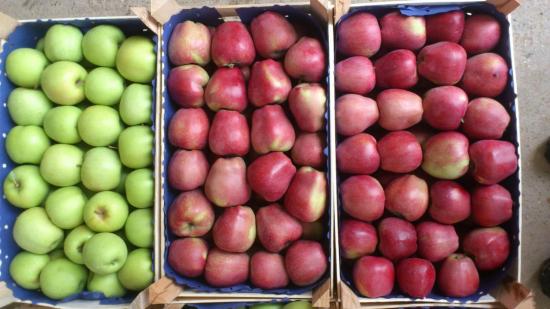
If you put the fruits in the cellar, after a while spots and looseness will appear on the peel, and the apple will acquire a bitter taste.
Therefore, it is better to put apples in a large refrigerator using special trays. It is necessary to moisten the pallets before doing this. Thanks to this storage, the apples will remain firm and juicy until May.
If unripe fruits were picked during the harvest period, storage on pallets in a cool room or cellar is allowed. The lower the temperature, the longer the ripening and storage process.
Reviews of the Jonathan apple tree
Reviews about the variety are often positive from both amateurs and professionals. Here are some of them.
Rostislav reports: I consider the Jonathan apple tree to be one of the five best varieties of apples. At first, for several years I bought fruits at the market and in stores, then I decided to plant seedlings in my garden. Four years later he collected his first harvest. I am pleased, for how many years now I have been collecting up to 4 years of fruits annually, and I manage to preserve the fruits well until spring. The trees were not exposed to any diseases. Very pleasant aroma and sweet taste, we eat it ourselves and treat our friends.
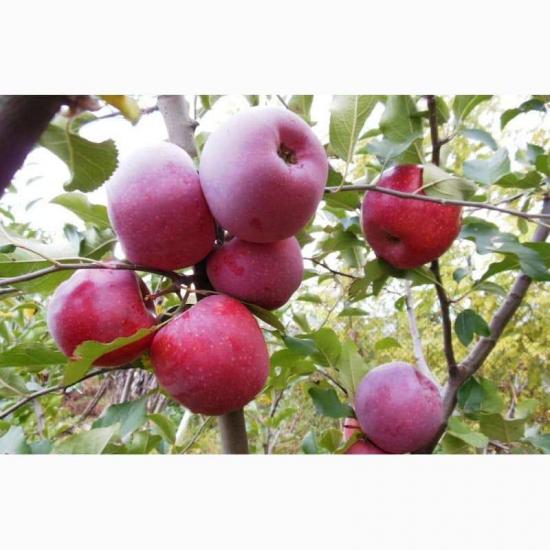
Konstantin, amateur gardener: This variety cannot be confused with any other, thanks to its taste. However, special skills are required during the growing process. Every year I treat the apple tree with fungicides against insect attacks. It needs light and care, like other trees in the garden. We collect at least eight buckets, enough for the whole winter.
Regina, a summer resident, shares the problems she encountered: We have long heard a lot of good things about Jonathan apples and were swayed by this opinion. I can safely say that we made the right choice. The fruits are very tasty, high yield. But I didn’t like that the tree was very tall and needed constant pruning. Until the top of the head was cut off, there were no normal fruits; in one season there were no more than 20 pieces, and then only very small ones. After pruning everything returned to normal, we treat the apple tree with fungicides.
Nadezhda writes on the gardening forum: In our garden, such an apple tree has been bearing fruit for 20 years. To enhance the taste and juiciness, after harvesting, let the fruit sit for a while. The variety is unpretentious and needs constant light and sun. Among apples it has the highest taste. You need to be patient and wait until the fruit turns bright red. The whole family is happy.
So, the Jonathan apple tree is the most delicious variety among its family. If you initially perform all the steps correctly during the planting period, and then trim and feed the tree in a timely manner, then there will be no problems with yield.


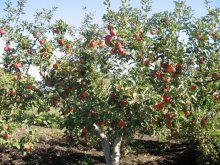
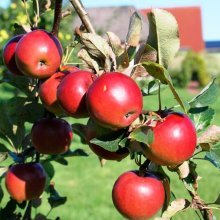
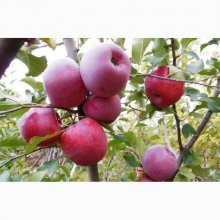
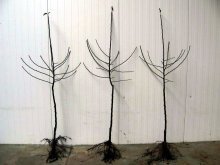
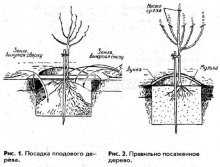
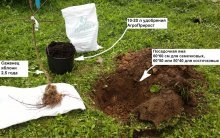
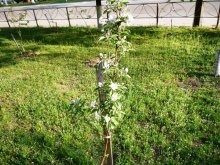
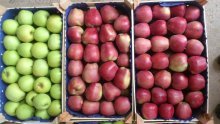
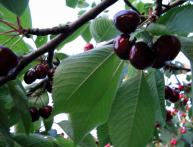
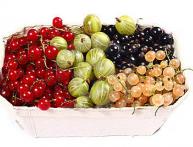
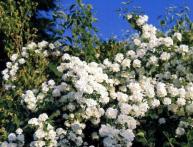
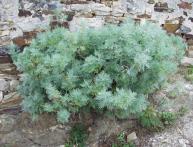
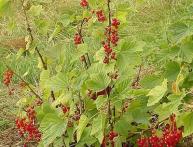
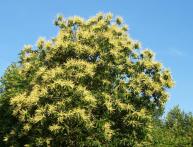
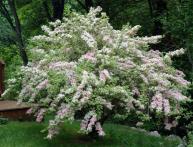
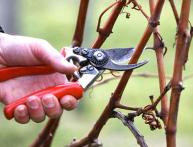
Comments
Jonathan apples have a very beautiful appearance, as for taste, that is, apples taste better. I store Jonathan in the basement, in small boxes, placing the apples in a single layer. We keep them well until the month of May.